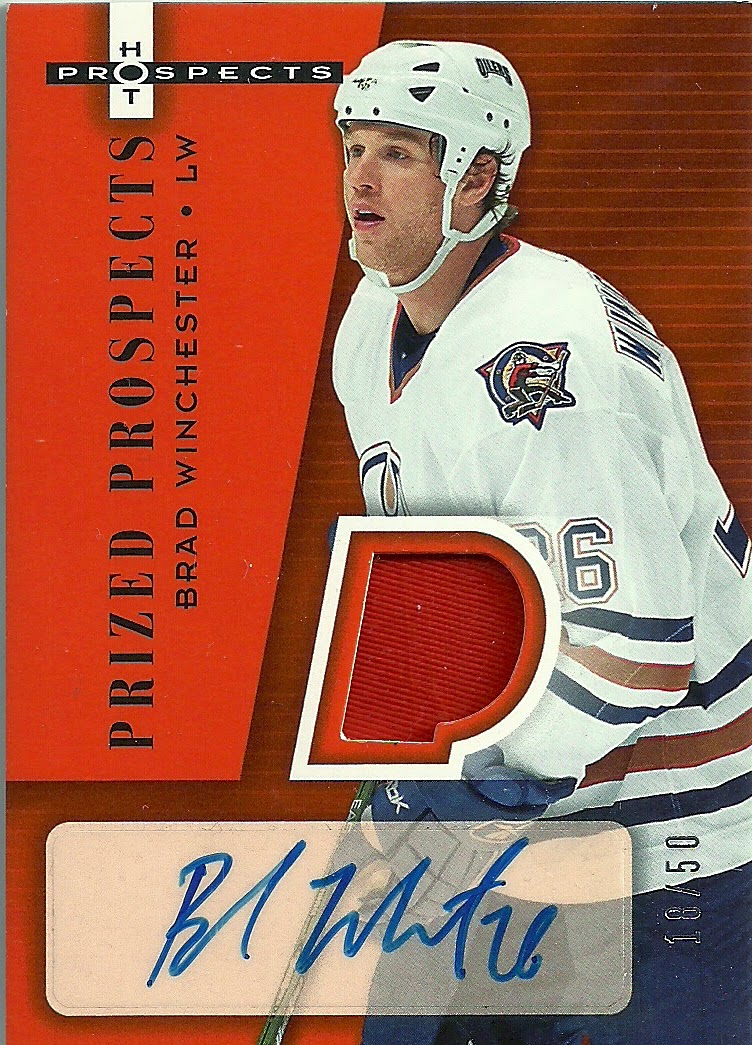As a fan of the Edmonton Oilers, I do try to keep track of their alumni, particularly those who I thought would be impact players - not necessarily just first-liners, but also players like Brad Winchester, a grinding giant (6'5', and nearly 230 pounds) whose first NHL goal was a playoff game-winner on the road against the top-seeded and heavily-favoured Detroit Red Wings, paving the way to an unsuccessful Stanley Cup run that ended in a bitter Game 7 defeat to the Carolina Hurricanes in 2006.
Having played his College Hockey with his hometown University Of Wisconsin Badgers, the Oilers chose Winchester 35th overall in 2000, ahead of Ilya Bryzgalov (44th), Jarret Stoll (46th), Antoine Vermette (55th), Paul Martin (62nd), Lubomir Visnovsky (118th), Travis Moen (155th), Henrik Lundqvist (205th), Matthew Lombardi (215th), and Paul Gaustad (220th), notably.
Apart from two All-Stars chosen late and who, in retrospect, should probably have been taken in the first round, the order seems about right to me.
Winchester hasn't played in the NHL since his stint with the San Jose Sharks ended in 2012, and from a statistial standpoint, it kind of makes sense.
Even in the AHL, his point production is erratic and changes dramatically from one season to the next, and the only time he was a point-per-game player was with the 2005-06 Hamilton Bulldogs, where his 26 goals and 40 points in 40 games came on a stacked team that included not only the Oilers' top prospects but also those of the Montréal Canadiens.
In the NHL, his output could go from 21 points in 64 games (2008-09 St. Louis Blues) to 10 points in 67 games (2011-12 Sharks). Because of his size, he's often put in a fourth-line energy role, and his statistics suffer because of it. That last year in San Jose, he averaged just 7:48 of ice time per game.
At 33 years of age, it would probably be unfair and unwise to expect him to completely turn his career around, but I always believed he could be efficient and get some 25 points per year by playing 10 to 12 minutes per game, with perhaps 30 seconds of second-unit powerplay time once in a while as a sign of appreciation for his efforts, where his job would be to park himself in front of the goalie and maybe get a garbage goal here and there.
The best coaches change their lines often nowadays, and having him hover between the third and fourth lines would probably be the best way to use him in the NHL, where he could hit, provide energy and perhaps fight with the grinders, and maybe produce a little with the checking line.
So far this year with the AHL's Norfolk Admirals (the Anaheim Ducks' affiliate), he has 7 points and 29 penalty minutes in just 11 games. He ranks second on the team in points and assists, and fourth in penalty minutes (they're a very truculent team).
I may now check #26 off my Oilers Numbers Project with this card, from Fleer's 2005-06 Hot Prospects set by Upper Deck:
It's card #238 of the Prized Prospects sub-set, and is numbered 18/50. It shows him wearing the Oilers' white (then-home) turn-of-the-century uniform, with the ''oil driller'' shoulder patch; it features a sticker autograph (signed in blue sharpie) and an orange swatch from a jersey worn in a photo shoot - too bad they placed it right in the chest, hiding the team's logo.
Subscribe to:
Post Comments (Atom)


No comments:
Post a Comment